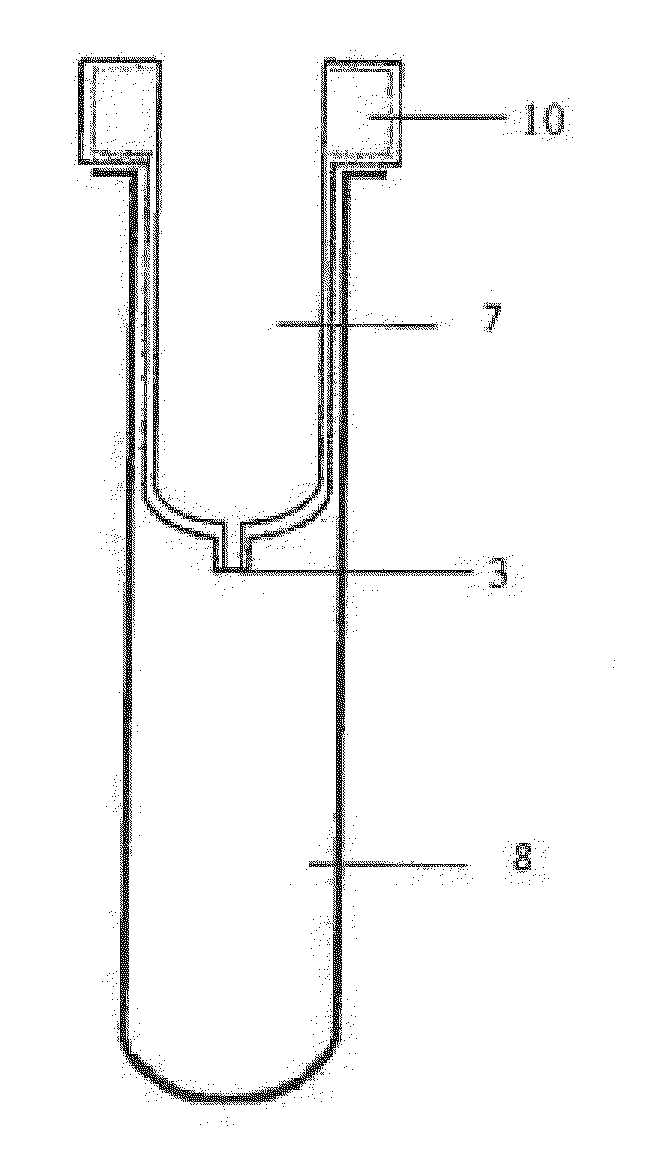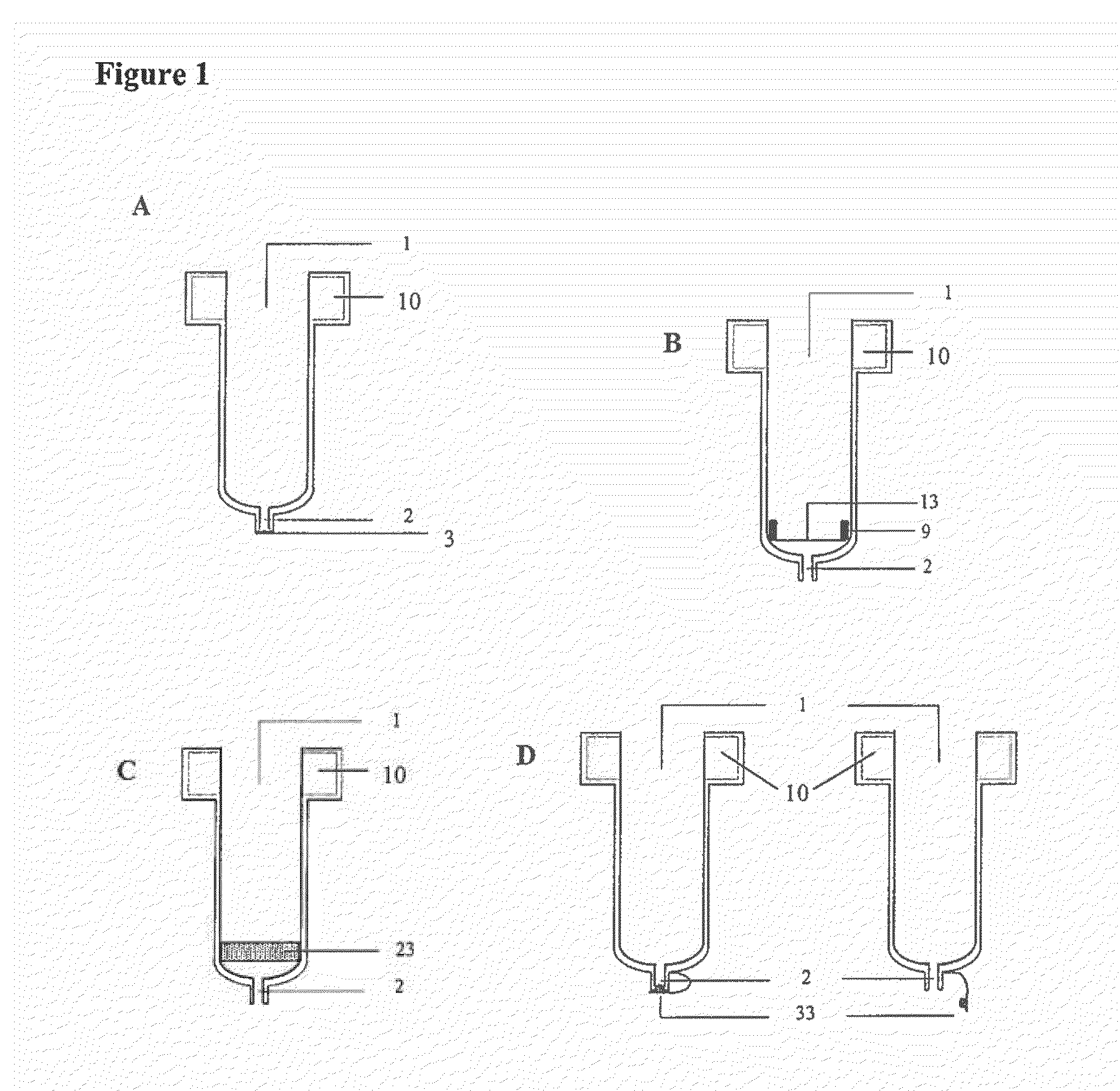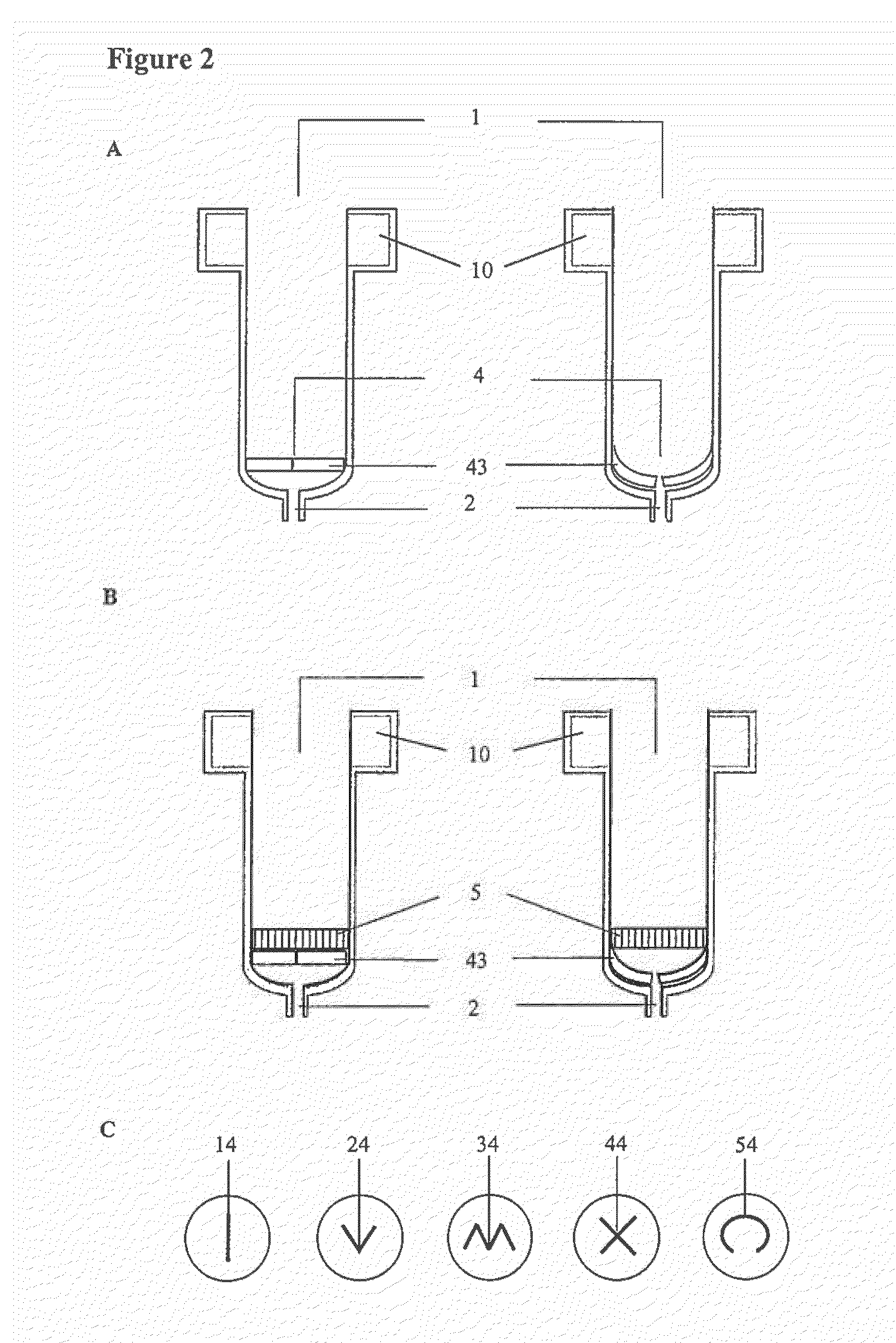Columns for incubation and isolation of chemical and/or biological samples
a technology for incubation and isolation of chemical and/or biological samples, applied in the field of chemical and biological sample preparation, can solve the problems of distortion or even total falsification of analysis, cumbersome procedures, and prone to cross-contamination
- Summary
- Abstract
- Description
- Claims
- Application Information
AI Technical Summary
Benefits of technology
Problems solved by technology
Method used
Image
Examples
example 1
A Column with an Impermeable Membrane Welded to the Outlet Opening
[0074]0.5 cm*0.5 cm pieces of “MicroAmp™” Optical Adhesive Film (Applied Biosystems®) are welded thermical for 2 s to the outlet opening of columns by use of Thermo Sealer (ABGENE®, Cat.-No. AB-0384 / 240). The column is then fitted into labelled collection tubes (2 ml Eppendorf Tube). 500 μl of water and 20 to 40 pieces of paper (2 mm*2 mm each; simulating the solid support of a sample) were applied into the column. The column was closed at the feed opening with a lid.
[0075]The device containing the water and the paper is centrifuged at 4000 rpm for 1 min using a fixed angle rotor in a conventional lab-bench centrifuge (Eppendorf Centrifuge 5415D, rotor FA-45-24-11). The pieces of paper are displaced to the walls of the column and adhere thereto. However, the closing means at the outlet opening of the column remains completely attached to the column and impermeable for liquids. After increasing the pressure to the clos...
example 2
DNA Isolation from Blood at a Cotton Swab
[0076]The tips of cotton swabs comprising a blood sample are applied into columns or devices like outlined in example 1. 200 μl of lysis buffer (Buffer G2, Qiagen MagAttract® DNA Mini M48 Kit, Kat.-Nr. 9533369) are added to the column. The columns are closed and the devices comprising the swab tip and the lysis buffer are incubated for 60 min at 56° C. Thereafter the devices are centrifuged in a lab-bench centrifuge (Eppendorf Centrifuge 5415D, Rotor FA-45-24-11) for 2 min at 12,000 rpm. The tips of the cotton swabs remain in the columns while the lysis buffer is transferred to the collection tubes. Columns are removed from the collection tube and discarded. The collection tubes are directly transferred to a robot for DNA isolation. No further processing like transferring to another tube and additional labelling is needed, as the collection tubes are labelled when the sample is applied. Thus, the collection tubes can unambiguously be allocate...
example 3
Determination of Preferred Flexible Sealing with Different Forms of Predetermined Breaking Points
[0077]The skilled artisan is able to determine flexible sealings comprising predetermined breaking points with the desired properties, i.e. the breaking points open at the desired externally applied pressure. For example disks of foamed rubber with a defined thickness, e.g. 1.5 mm, are applied positively into outlet openings of columns. The disks comprise different forms of predetermined breaking points (cuts). The columns are then applied into collection tubes (2 ml Eppendorf Tube). 100 μl or 500 μl of water are applied into the column. The columns comprising the water are centrifuged in a lab-bench centrifuge (Eppendorf Centrifuge 5415D, Rotor FA-45-24-11) for 1 min at the indicated speed (see Table 1 and 2). The amount of water transferred to the collection tube (%) is determined.
[0078]Furthermore, in a separate experiment the amount of solid state of disperse mixtures (i.e. fluids (e...
PUM
| Property | Measurement | Unit |
|---|---|---|
| Pressure | aaaaa | aaaaa |
| Pressure | aaaaa | aaaaa |
| Angle | aaaaa | aaaaa |
Abstract
Description
Claims
Application Information
 Login to View More
Login to View More - R&D
- Intellectual Property
- Life Sciences
- Materials
- Tech Scout
- Unparalleled Data Quality
- Higher Quality Content
- 60% Fewer Hallucinations
Browse by: Latest US Patents, China's latest patents, Technical Efficacy Thesaurus, Application Domain, Technology Topic, Popular Technical Reports.
© 2025 PatSnap. All rights reserved.Legal|Privacy policy|Modern Slavery Act Transparency Statement|Sitemap|About US| Contact US: help@patsnap.com



